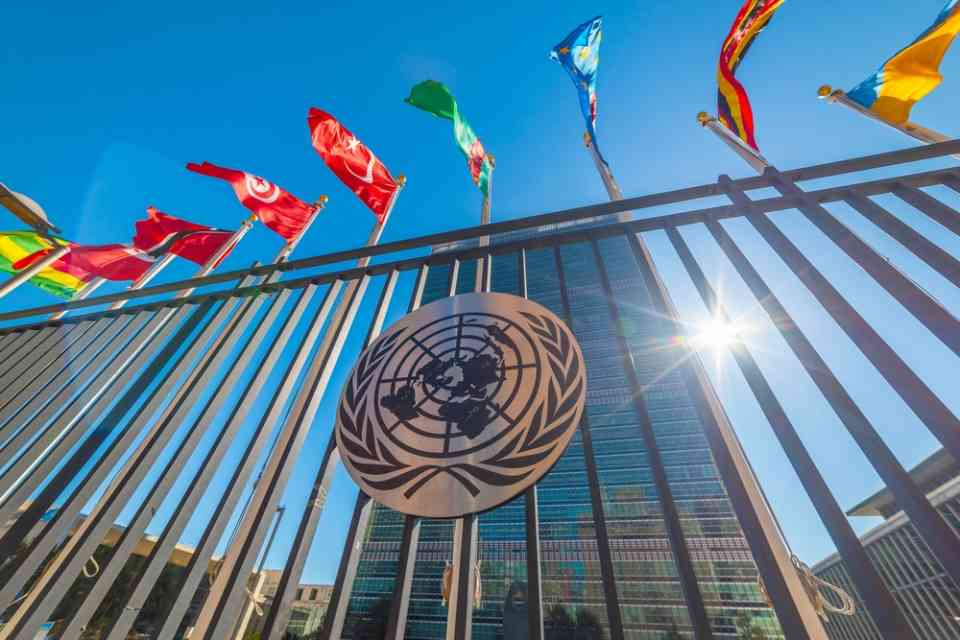Global Economic Growth to Remain Stagnant at 2.8% in 2025, UN Report Finds

The United Nations’ flagship report, World Economic Situation and Prospects (WESP) 2025, has forecast global economic growth to hold steady at 2.8% in 2025, the same rate as in 2024. Despite the global economy showing resilience against numerous interrelated shocks, growth remains below the pre-pandemic average of 3.2%, constrained by weak investment, sluggish productivity, and high debt levels.
The report highlighted that declining inflation and continued monetary easing across various economies might provide a modest uplift to global activity in 2025. However, risks persist, fueled by geopolitical conflicts, escalating trade tensions, and elevated borrowing costs. These challenges are especially pronounced in low-income and vulnerable nations, where fragile growth threatens progress towards the Sustainable Development Goals (SDGs).
Regional Economic Outlook
- United States: Economic growth is anticipated to slow from 2.8% in 2024 to 1.9% in 2025, as a softening labor market and reduced consumer spending weigh on the economy.
- Europe: A modest recovery is expected, with GDP growth increasing from 0.9% in 2024 to 1.3% in 2025. This improvement is attributed to easing inflation and resilient labor markets, although fiscal tightening and structural challenges such as low productivity and an aging population remain significant concerns.
- East Asia: The region is forecast to grow by 4.7% in 2025, led by China’s stable growth of 4.8% and robust private consumption across the region.
- South Asia: The fastest-growing region globally, South Asia is projected to achieve GDP growth of 5.7% in 2025, fueled by India’s robust 6.6% expansion.
- Africa: Growth is expected to rise slightly from 3.4% in 2024 to 3.7% in 2025, driven by recoveries in major economies such as Egypt, Nigeria, and South Africa. However, challenges including conflicts, rising debt servicing costs, unemployment, and climate-related impacts continue to weigh on the continent’s outlook.
Global Trade, Inflation, and Financial Conditions
Global trade is projected to expand by 3.2% in 2025, following a rebound of 3.4% in 2024, supported by increased exports of manufactured goods from Asia and strong growth in services trade. However, trade tensions, protectionist policies, and geopolitical uncertainties pose risks to this outlook.
Inflation is expected to decline from 4% in 2024 to 3.4% in 2025, alleviating pressure on households and businesses. Central banks in major economies are anticipated to implement further interest rate cuts as inflationary pressures ease. However, in many developing countries, inflation will likely remain above recent historical averages, with one in five projected to face double-digit inflation in 2025.
While easing global financial conditions may reduce borrowing costs for developing economies, access to capital remains uneven. Many low-income nations continue to face significant debt-servicing burdens and limited access to international financing.
Food Inflation and Sustainable Development
Despite overall declines in global inflation, food inflation remains elevated, with nearly half of developing countries experiencing rates above 5% in 2024. This trend has exacerbated food insecurity in low-income nations already grappling with extreme weather events, conflicts, and economic instability. The report warns that persistent food inflation, combined with slow economic growth, could push millions deeper into poverty.
The report also underscores the potential of critical minerals such as lithium, cobalt, and rare earth elements in accelerating progress toward the SDGs and facilitating the energy transition. For resource-rich developing nations, rising global demand for these minerals offers opportunities to stimulate growth, generate jobs, and increase public revenues for sustainable development investments.
However, the report cautions that these opportunities come with risks, including poor governance, unsafe labor conditions, environmental degradation, and overreliance on volatile commodity markets. Without addressing these issues, such gains could exacerbate inequalities and harm ecosystems, undermining long-term development prospects.
Have you read?
Richest Countries In Europe In 2024.
Most Attractive Countries To Private Equity, Venture Capital, and Hedge Fund Investors.
Revealed: Highest-paid news media executive in the United Kingdom.
Countries Leading the Way on Climate Change.
World’s Best Countries For Adventure Tourism.
Bring the best of the CEOWORLD magazine's global journalism to audiences in the United States and around the world. - Add CEOWORLD magazine to your Google News feed.
Follow CEOWORLD magazine headlines on: Google News, LinkedIn, Twitter, and Facebook.
Copyright 2025 The CEOWORLD magazine. All rights reserved. This material (and any extract from it) must not be copied, redistributed or placed on any website, without CEOWORLD magazine' prior written consent. For media queries, please contact: info@ceoworld.biz








